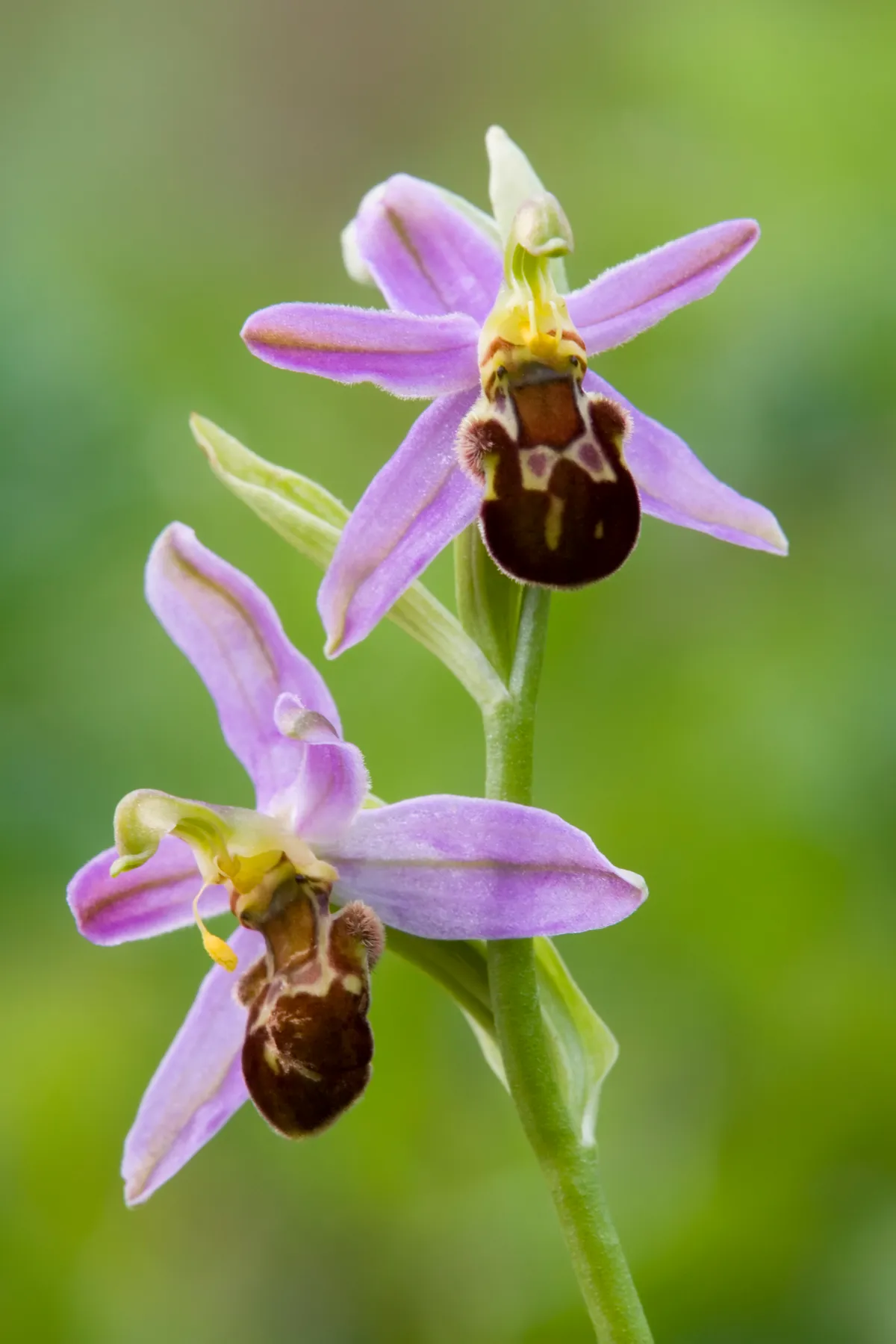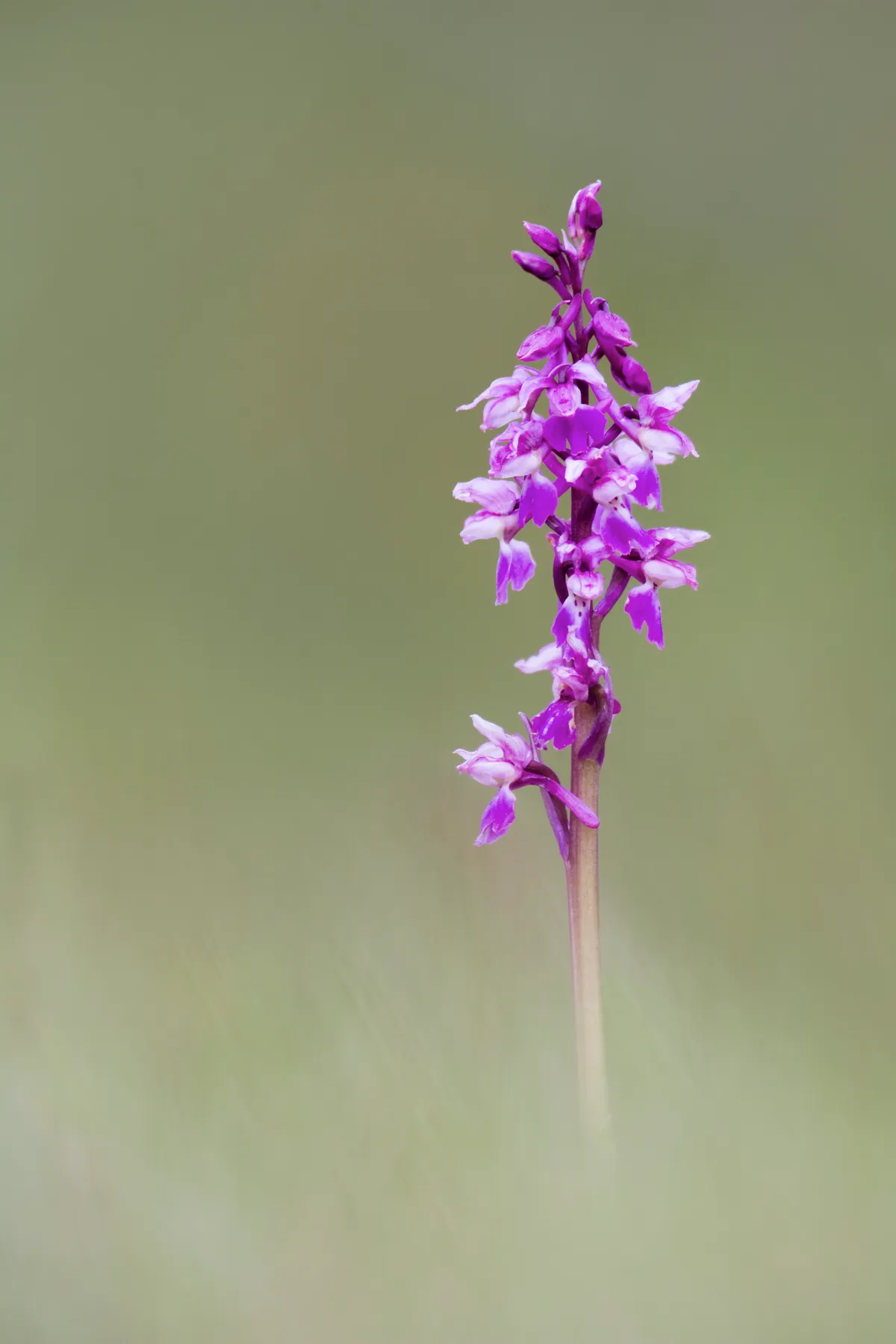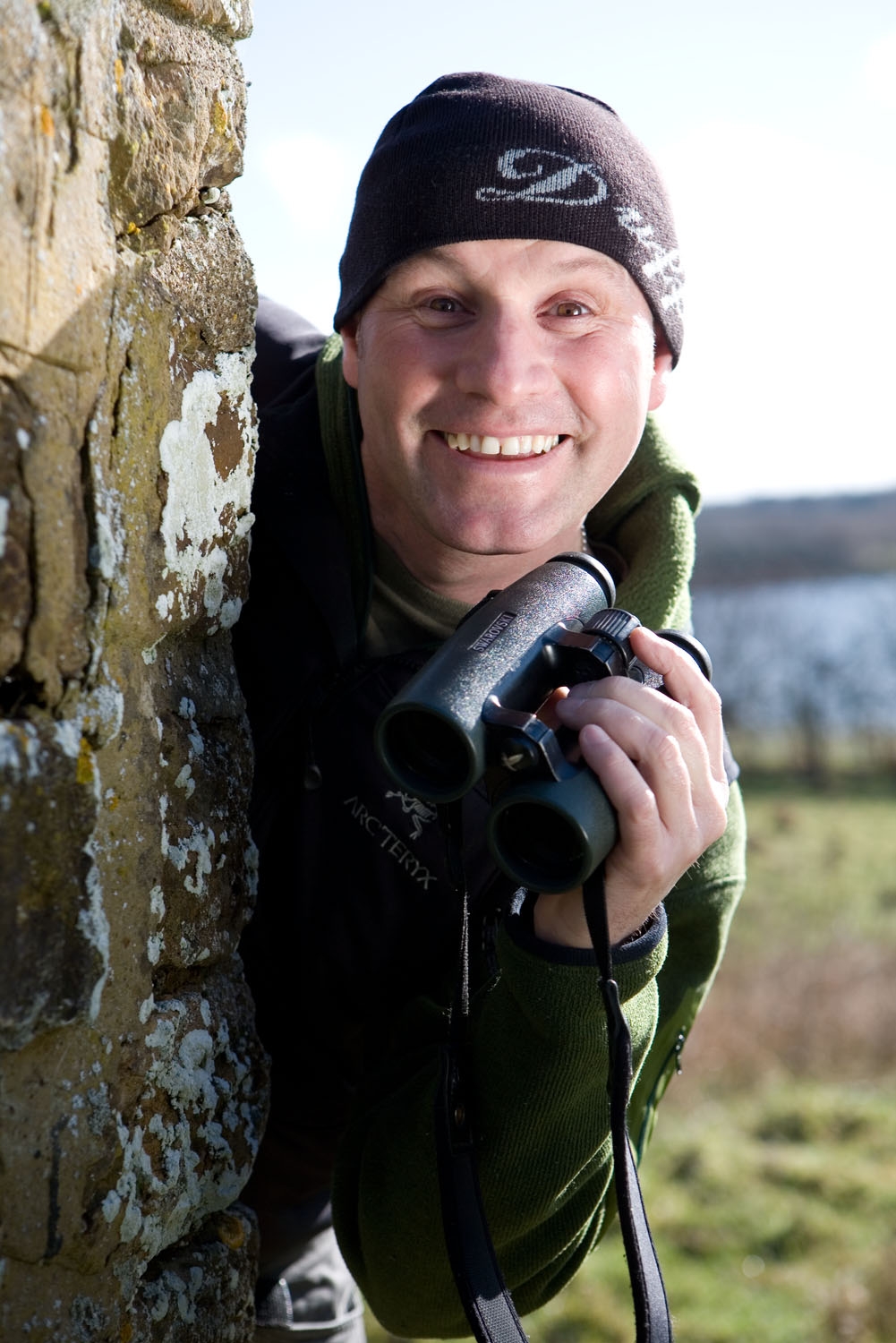Surely no other habitat harkens back to a bygone era more than a lowland meadow brimming with orchids. Despite providing perhaps Britain’s finest pinkish-purple spectacle, the disappearance of 97% of all our orchid meadows since World War II is a tragic and all-too-familiar tale. In a battle that pitched flower-rich meadows against both rapidly changing farming methods and the needs of an ever-expanding population, there was only ever going to be one winner.
Meadows are often considered the quintessential summer habitat, as this is when the elevated temperatures see the meadow thrumming with grasshoppers, bumblebees and butterflies. But for those with a botanical bent, May and June are certainly the best months to head off for an orchid fix.
At the best sites, and depending on geology and geographical location, orchid spikes frequently appear in their thousands, with green-winged, early purple and common spotted orchids most abundant earlier in May, while fragrant and bee orchids will start appearing at the end of the month.
How do orchid meadows form?
While these orchidaceous meadows may appear to be the most natural of habitats, they are in fact the product of long-term human management. Also called hay meadows, these floristically rich grasslands were traditionally managed in a low intensity manner that allowed for both the production of a hay crop and grazing by livestock.
Unlike pasture that is often grazed all year-round, hay meadows tend to be free of sheep and cattle between late spring and mid summer. This crucially allows the orchids to flower and set seed before suffering the indignity of being eaten or trampled. Only once most flowers have completed their life-cycle, and ground-nesting birds have reared their young, will the meadow finally be harvested for hay and livestock allowed to return.
This form of management allows not just the orchids, but all the wildflowers to thrive, while keeping the more aggressive grass and shrub species in check, which will ultimately prevent the site from reverting back to scrub.
Another key feature the best meadows share is they’ve all avoided the kiss-of-death from modern fertilisers. When combined with ploughing, this ‘nutrient enrichment’ favours the growth of a limited cast of often genetically improved and high-yielding species, such as perennial rye grass and white clover. The once-rich fields become irrevocably changed into bland and species-poor monocultures.
Orchid species to look out for
Bee orchid (Ophrys apifera)

The bee orchid is so-called because within the large pink sepals are petal-shaped and coloured like a visiting bee.
Green-winged orchid (Anacamptis morio)

Some species, such as the green-winged orchid can exhibit huge variations in colour at just one site. This species is so-named due to the presence of fine green lines in the lateral sepals, but the colour of the flowers can differ widely from deep violet-purple to rose-pink or even white. Green-winged orchids can also be found in churchyards and on village greens.
Fragrant orchids (Gymnadenia)

Fragrant orchid flowers release a sweet, orangey smell that is strongest in the evenings. Once considered a single species, they have now been split into three distinct types – chalk, heath and marsh – with the geology and geography dictating precisely which species is found where.
Early purple orchids (Orchis mascula)

As its name suggests, early purple is the first of our common orchids to flower, with the magenta spikes appearing above a rosette of heavily spotted leaves in April. This orchid’s scientific genus Orchis means testicle in Greek and they are so-called due to their twin underground tubers, which resemble the aforementioned.
How do orchids reproduce?
Understanding the need to manage sympathetically is particularly important for mercurial species such as orchids. Producing countless dust-like seeds with no energy reserves of their own, orchids must form mycorrhizal associations with specific fungi if they are to successfully germinate and survive their early below-ground stage.
It is only once the developing orchid begins photosynthesising that it may become less dependent on its fungal life-support system, although many do appear to maintain this relationship throughout their lifetime. With the fungal stars so hard to align, this may help explain why a common spotted orchid, for example, must produce up to half a million seeds each season, but it is also why the orchids at certain favoured sites are able to appear so prolifically.
How successful are bee orchids at pollination?
Resembling the furry body of a bumblebee and emitting a scent that mimics the female sex pheromones, bee orchid flowers induce
male bees to try to mate with them, picking up and transferring the sticky male pollinia in the process.
This strategy is successful in Continental bee orchids, but rarely effective in our native Ophrys apifera, which instead self-pollinates when its pollinia dangle down and touch the stigma below.
This is highly efficient, with most flowers setting thousands of seeds – unlike pollination in the fly orchid O. insectifera, which dupes digger wasps but achieves less than 20 per cent seed-set. However, such inbreeding can sometimes produce malformed blooms.
This Q&A originally appeared in BBC Wildlife, and was answered by Phil Gates.
What's the future for orchid meadows?
The extent to which these orchid-rich meadows were lost was only realised retrospectively and is perhaps best summed up by Joni Mitchell’s song lyrics from Big Yellow Taxi – “Don’t it always seem to go, that you don’t know what you’ve got ‘til it’s gone”.
However, the good news is that some forward-thinking farmers and conservation charities are working hard to maintain and even expand the habitat available for our meadow orchids. Plus, it’s also important to celebrate what we still have left too.
Best places to see lowland meadow orchids in the UK
Clattinger Farm, Wiltshire, England
Considered the only lowland farm in Britain to have never received an application of agricultural chemicals. Managed by Wiltshire Wildlife Trust, up to eight species of orchids can be seen on a visit here in either May or June.
Oxley Meadow Nature Reserve, Essex, England
A 4ha Essex Wildlife Trust meadow that bursts into colour in May with meadow buttercups and up to 75,000 green-winged orchids. It's also home to adders-tongue fern, lesser whitethroat and a variety of butterflies.
Kingcombe Meadows, Dorset, England
Managed by Dorset Wildlife Trust as a traditional working farm and now part of the wider Kingcombe National Nature Reserve, its varied geology sees an equally diverse array of orchids, such as early purple, bee and heath spotted orchids in May and early June. Other wildlife to look out for on the reserve include great crested newt, linnet, yellowhammer, cowslip, harebell, sneezewort and devil's bit scabious.
Hartslock Nature Reserve, Oxfordshire, England
Managed by Berks, Bucks & Oxon Wildlife Trust, this chalk grassland overlooking the Thames is stuffed full of orchids. It is one of only three sites to possess the rare monkey orchid, plus a hybrid of monkey and lady orchids.
Pentwyn Farm, Gwent, Wales
Run by Gwent Wildlife Trust, this grassland is an example of how meadows used to be managed in the traditional way. The 11ha hay meadow is thought to contain thousands of green-winged orchids and over 10,000 common spotted orchids in late spring. Other wildflowers to spot include early-purple orchid, cowslip, common knapweed, oxeye daisy, yellow-rattle and eyebright.
Main image: A low point of view and wide-angle image of a meadow filled with orchids and buttercups.
